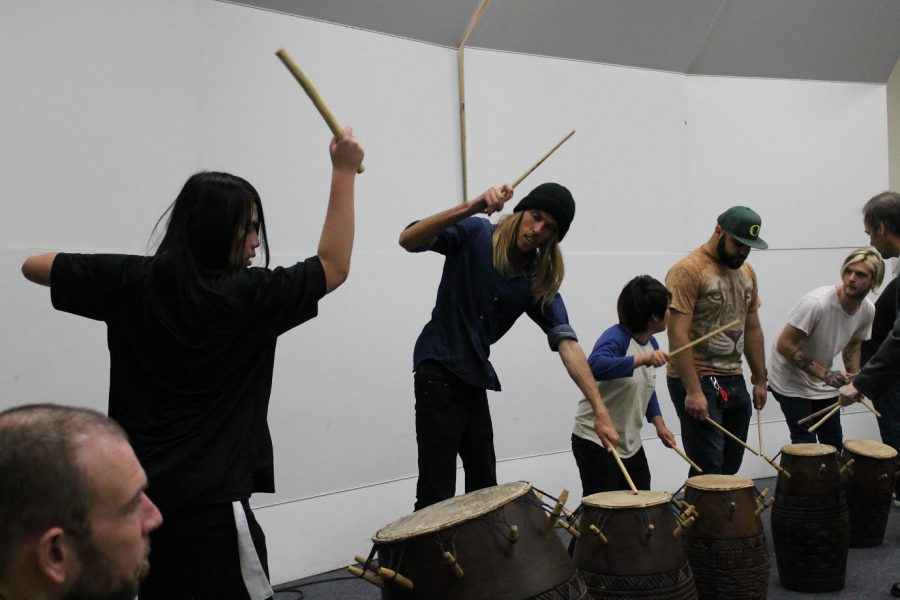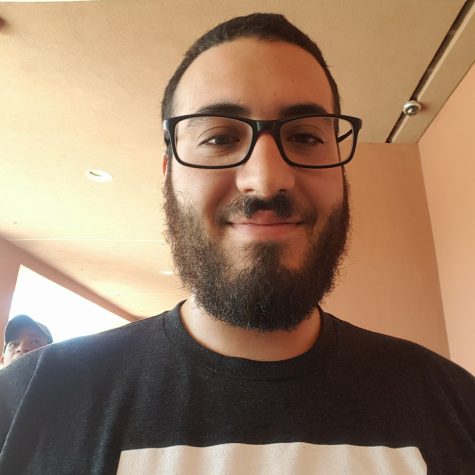Primal, visceral, and raw. These are emotions that a student will feel while playing in one of Mesa’s best kept secrets, the World Musical Ensemble.
Dr. N. Scott Robinson is a well decorated percussionist with a Bachelor of Arts from Rutgers University, a Master of Arts for Ethnomusicology and a Doctor of Philosophy for Musicology-Ethnomusicology from Kent State University.
One goal Robinson sets for WME is that students become self-aware they can play music. “I want students to discover they can play by doing it together,” Robinson said.
While learning to play an instrument, the WME class breaks cultural and racial barriers with percussion instruments. Furthermore students will learn the value of teamwork by depending on each other to be successful.
Students of any musical ability are welcome to join the WME, listed as MUSI 251A in the school catalogue.
WME students will learn to play a myriad of instruments with variance in difficulty, such as shakers, amadinda, akadinda, and the talking drum. Robinson will help you learn the basics of the instrument, with guidance from continuing students.
Besides learning to play an instrument students will feel part of something bigger than a class. WME students work together to build a community of equality and acceptance. “We create a community of music, of multi-orientation and multi-cultural community,” Robinson said.
Although the class may be simple, there are pieces that can be difficult. For example the WME students played a song on the akadinda a xylophone from Uganda with three students on the left side and three on the right of the xylophone. Imagine a beat that goes like the following, saying it like it is read. 1 AND 2 AND 3 AND 4. Students on the left playing on the numbers and the students on the right playing on the AND. Now imagine that beat playing at a faster pace. The song can become rather difficult to master.
Students have to trust the person next to them and in front to play the correct notes. If someone makes a mistake, students have to trust that they will find the beat or fail.
On the other hand it can be as simple as a beat on a shaker or a bell. These instruments, although easy to pick up, can add depth to the sound of the song. Additionally without the sound of the shaker or the bell the song sounds incomplete.
Current WME has students from different musical backgrounds. Aaron Corbin is an eight-year drummer, Haiyan Jiang has been playing classical piano since she was six, and Duy Phan has been playing for so long he forgot when he started.
There are students who are taking WME to further their musical repertoire. For example there is Corbin, who uses the interconnections of rhythms in the WME to add depth to his personal musical projects. Also James LaBelle, who is furthering his musical education by learning new instruments.
First-semester Mesa student Eric Dobko said “ Playing music with people is one of the ultimate ways to connect.”Although it’s Dabko’s first two weeks at Mesa it seemed like he knew his classmates for a while.
WME allows students a small taste of different cultures with a craving to continue WME for the rest of their time at Mesa. In addition to learning music from different cultures, students will hopefully walk away creating a community with friendships that will endure well after leaving Mesa.



